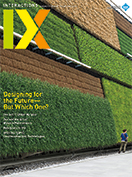Authors:
Lauren Ruiz
When I first joined Cooper and heard about its "Cook Blub," I was a little confused as to what that actually was. I quickly learned it was a unique name for their book club—a place where employees could nominate a book to read and discuss over lunch. Here I'll share what's been on our reading list this past year and why, along with a book I've been reading outside the office.

Thinking, Fast and Slow By Daniel Kahneman (2011) As human-centered designers, we're constantly trying to understand people and their behaviors as we create products and services that attempt to change behavior and engage people in an increasingly information-abundant world. In Kahneman's book, you are taken on an exploration of the mind, where he explains the two systems that drive the way we think: System 1 is fast, intuitive, and emotional; System 2 is slower, more deliberative, and more logical. People will use lazy fast thinking to provide solutions—even if they are wrong in all but the most extreme cases—but there are advantages to using our slow thinking more frequently.
Kahneman reveals where we can and cannot trust our intuitions, and how we can tap into slow thinking, giving us a better understanding of ourselves and others.

Service Design: From Insight to Implementation By Andy Polaine, Lavrans Løvlie, and Ben Reason (2013)
Increasingly, design thinking is being applied to the creation of services, regardless of whether they involve a digital touchpoint. Service Design is a practical guide for how to design services that are human-centered. The book offers lessons learned from real case studies, including methods and insights to help you design, implement, and measure multichannel service experiences. We found this to be one of the most comprehensive, clear, and useful books for anyone looking to learn and experience service design.

The Best Interface Is No Interface
By Golden Krishna (2015)
The creation of this book was sparked by a blog post on the Cooper Journal by former Cooperista Golden Krishna. It also sparked internal and external debate about whether the best interface really is no interface. Claiming that our love affair with screens has gotten out of control, Krishna challenges our world of nagging screen-based bondage and uses three principles to show how we can still build a technology-advanced world without digital interfaces. Many of his principles overlap with service design, making it an interesting companion to Polaine et al.'s book.

Krishna challenges our world of nagging screen-based bondage and uses three principles to show how we can still build a technology-advanced world without digital interfaces.
Convivial Toolbox: Generative Research for the Front End of Design
By Liz Sanders and Pieter Jan Stappers (2013)
This book has been a personal read for me, as I've found a rising need to conduct generative design research to more deeply understand people's needs and desires. Sanders and Stappers provide a comprehensive guide to what generative research is, how to conduct and analyze it, and how to move forward from there. Littered with case studies, beautiful models, and clear articulations on what to do, it gives you the confidence to go out and experiment in your own work. It has been a cornerstone in curriculum development for me.
Lauren Chapman Ruiz is a senior interaction designer at Cooper, where she solves complex design challenges for a range of clients from agile start-ups to Fortune 500 companies. She also teaches undergrads and graduate students in the interaction design program at California College of the Arts in San Francisco. [email protected] http://www.cooper.com/people/lauren_ruiz @lchapmanruiz
Copyright held by author
The Digital Library is published by the Association for Computing Machinery. Copyright © 2016 ACM, Inc.









Post Comment
No Comments Found